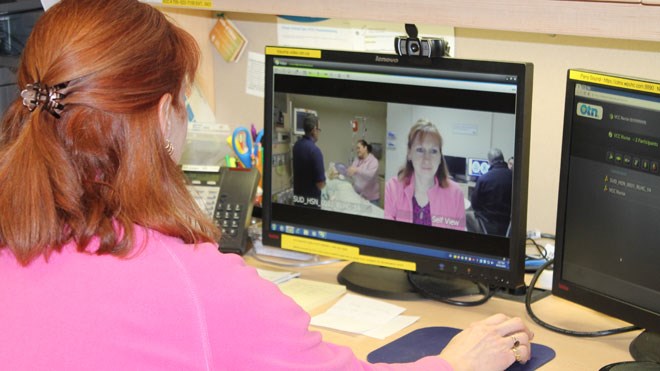Health Sciences North has added seven more hospitals in northeastern Ontario to its virtual critical care unit.
The emergency departments at Espanola Regional Hospital and Health Centre, Manitoulin Health Centre (Little Current and Mindemoya sites), Blind River District Health Centre, Services de santé de Chapleau Health Services, Hôpital de Mattawa Hospital, and Lady Dunn Health Centre in Wawa have all joined the virtual critical care unit.
The unit uses the latest in videoconferencing technology and electronic medical records sharing to connect Health Sciences North with smaller critical care units and emergency departments at hospitals across northeastern Ontario. The virtual critical care model uses a specially designed software program created by the Ontario Telemedicine Network.
The addition of the seven new sites brings to 16 the number of hospitals in northeastern Ontario using virtual critical care. The North East Local Health Integration Network supports the virtual critical care unit. It launched in May 2014, and is the first virtual critical care model of its kind in Canada.
Since its introduction, the virtual critical care unit has been used for a total of 207 consults involving 62 patients. Consultations through the unit allowed health care professionals to avoid medical transfers for 26 of those patients, at an estimated savings of approximately $450,000.
“Through this collaborative care model, we can provide earlier consultations that are of better quality, we form stronger ties between our hospitals and ultimately patient care is improved,” said Dr. Derek Manchuk, lead physician of the virtual critical care unit, in a press release.
“The remote communities now have access to services that they don't have locally. By supporting local care, there is sometimes opportunity for patients to avoid transfer to a larger centre, which causes less disruption for patients and their families."
Join Sudbury.com+
- Messages
- Post a Listing
- Your Listings
- Your Profile
- Your Subscriptions
- Your Likes
- Your Business
- Support Local News
- Payment History
Sudbury.com+ members
Already a +member?
Not a +member?
Sign up for a Sudbury.com+ account for instant access to upcoming contests, local offers, auctions and so much more.
